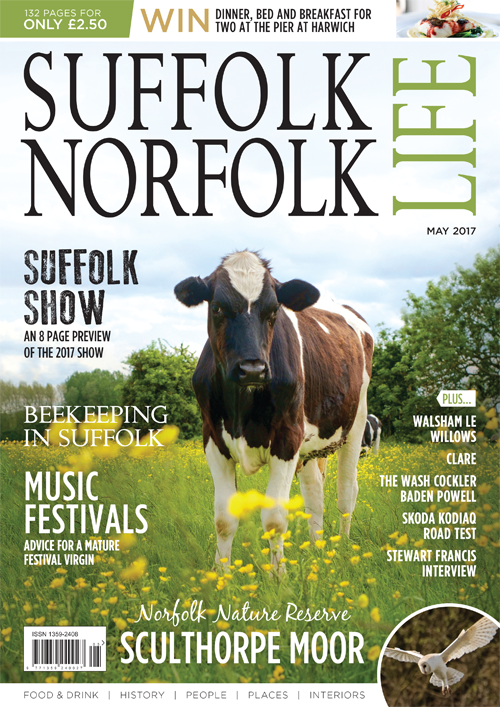- A feature from the May 2017 issue of Suffolk Norfolk Life magazine
 Click to view this issue »
Click to view this issue » - Category
- Nature, Places
By Serena Shores
Travelling through the village of Sculthorpe on the A148 between Fakenham and King’s Lynn, on the right-hand side there is a white sign indicating a Nature Reserve. This points to a rough track called Turf Moor Road, the simple feel of which is a modest introduction to the immensely valuable and unique wildlife habitat which is old Turf Moor and the dedicated work of its stewards, the Hawk and Owl Trust.
The Hawk and Owl Trust was formed in 1969 in response to the decline in the numbers of familiar birds of prey; in particular peregrine falcons. After centuries of persecution, many raptors were falling foul of now disused pesticides and struggling to find enough food in the intensely farmed agricultural landscape which was becoming a virtual wilderness. The Trust initially leased the site from the Francis Beckham Trust in 2001; in 2002 the public were allowed access for the first time.
“Turf Moor” itself has an unusual history. A former medieval deer chase, during the Enclosures, the land owners decided that they would donate it to the local community it had long served, providing fuel in the form of ‘flags’ of peat and bedding for their livestock.
It was this ancient land management practised over many centuries which created invaluable saw sedge wetland habitat. Always being low-lying and very wet, the woodland soon gave way to beds of reed and sedge which were harvested and maintained using a system similar to that seen on the Norfolk Broads. The habitat which evolved after this practice ended began to attract birds of prey who found it plentiful in their main sources of food, and in turn the Trust saw its enormous potential.
Today the wet and dry woodland, areas of reed-bed, fen, grassland and water channels also support marsh tits, tree creepers, kingfishers, water rail, orchids and water voles as well as being abundant in specialist insects and fungi. The Trust’s work in creating essential hunting habitats and roosting and nesting sites for their hawks and owls produces the beneficial by-product of providing a haven for their prey as well as all manner of insect, mammal and amphibian life.

